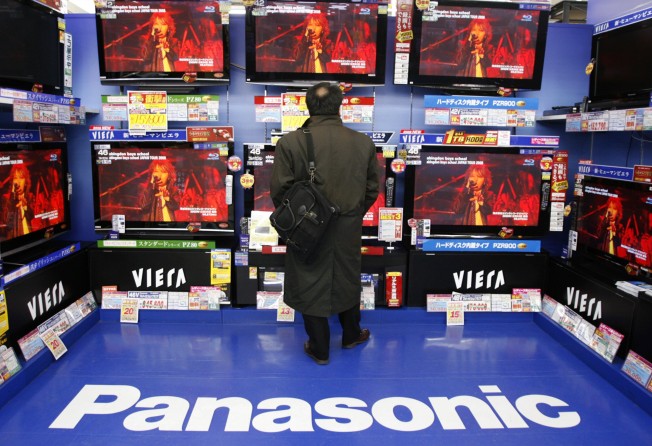Shutting of Panasonic's last plasma plant latest nail in coffin of Japan's TV industry

Panasonic’s move to close its last plasma television factory completes a painful reckoning that has all but killed off Japan’s TV industry, once the pride of the country’s postwar rise to technological and economic power.
In a golden era that began in the 1970s, Japan’s TV makers brought cutting-edge yet affordable technology and brand names like Sony, the Trinitron and Panasonic into living rooms across the West, at the expense of US and European rivals.
But after dominating the business for decades, companies like Sony Sharp and Panasonic have taken less than a decade to slide into deep losses, becoming also-rans to a new breed of nimble, cash-rich rivals like Samsung Electronics.
Osaka-based Panasonic will pull out of the plasma TV business by the end of the financial year to March next year, sources familiar with the situation said on Wednesday. The news was first reported by the Nikkei business daily.
The end has come sooner than expected, underlining company president Kazuhiro Tsuga’s determination to weed out weak operations as he focuses on higher-margin products to end years of losses at the consumer electronics conglomerate.
All that will remain of Japan’s TV manufacturing are three cutting-edge liquid crystal display plants, with Sharp’s partially owned by foreign players, and a few assembly plants. Storied Japanese brands such as Toshiba and Hitachi are outsourcing the bulk of their sets to other manufacturers.
Like the US and European companies they defeated in the industry decades ago, the Japanese can chalk up their fate as much to hungry competitors as to their own mistakes.
“It wasn’t just a failure of Japanese companies. It was also that rivals caught up quite fast,” said Lee Kun-soo, an analyst at industry research firm IHS iSuppli.
“The Japanese companies were probably a bit sentimental, underestimated their rivals and didn’t form a competitive strategy.”
The decline of Japan’s TV business comes as the global industry faces a pivotal moment – how to cope with consumers around the world beginning to use their computer screens, laptops and tablets to watch more on-demand broadcasts and media content.
Global TV shipments dropped 6.3 per cent last year, the first decline in over a decade, according to IHS iSuppli, with the flat-panel market reaching saturation after consumers in developed markets completed the switch from cathode ray tubes.
The shrivelling of the industry also comes as new leaders installed at Sony, Panasonic, Sharp and Toshiba over the past year and a half make a significant break with the past – a difficult task in many Japanese corporations, where the people who ran firms remain within the organisations’ structures even after passing on the reins of leadership.
Japanese TV makers, while overlooking the ability of their rivals to build up a global brand quickly, did too little to protect their technology from rivals, were too easily convinced to spend big on projects and too slow to make strategic decisions to adjust to changing trends in demand.
Panasonic’s plasma TV base at Amagasaki, a sprawling bayside complex midway between the cities of Osaka and Kobe, typified the last two problems. The newest of its factories had been in operation less than two years when Tsuga, then a senior managing director running the TV business, shut it along with another factory, leaving just one in operation.
The TV division has been a major contributor to Panasonic’s combined US$15 billion net loss in its two latest financial years. Its TV business posted an operating loss of 88.5 billion yen (HK$7.1 billion) in the last financial year.
But Tsuga has waited until after Fumio Ohtsubo – the man who pushed Panasonic head-first into plasma with the 485 billion yen Amagasaki project – resigned as chairman in June to make the decision to pull the plug on plasma completely.
Sources familiar with the situation said on Wednesday that the No 2 Amagasaki plant, the last in operation, would be shuttered within months and that the company would take a 40 billion yen impairment charge to cover the cost, likely out of the 120 billion yen earmarked for restructuring at the beginning of the year.